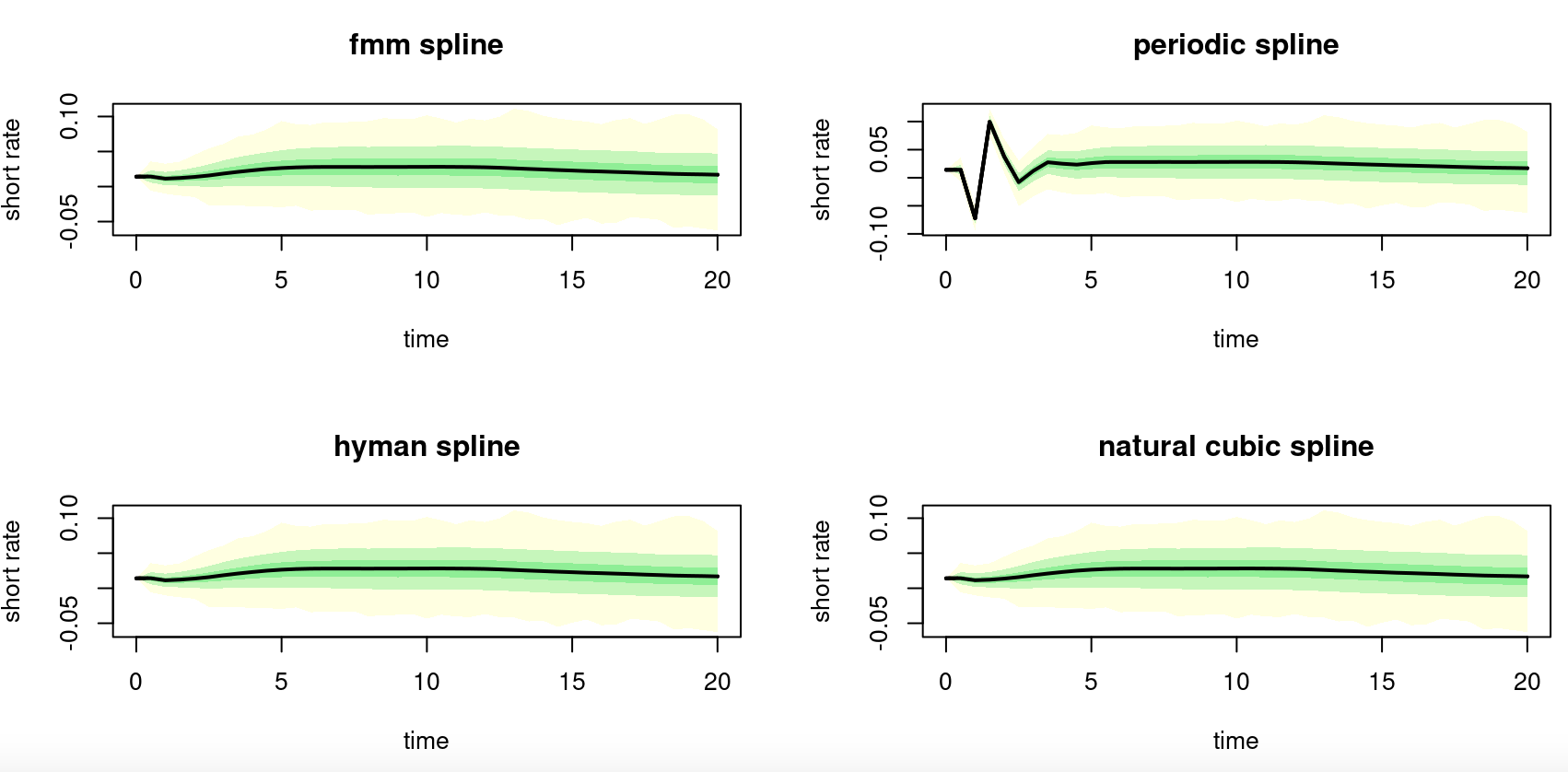Today, give a try to Techtonique web app, a tool designed to help you make informed, data-driven decisions using Mathematics, Statistics, Machine Learning, and Data Visualization. Here is a tutorial with audio, video, code, and slides: https://moudiki2.gumroad.com/l/nrhgb. 100 API requests are now (and forever) offered to every user every month, no matter the pricing tier.
In this post, I introduce new versions of ESGtoolkit, ycinterextra, and nnetsauce.
- ESGtoolkit (for R) is a toolkit for Monte Carlo Simulation in Finance, Economics, Insurance, Physics, etc.
- ycinterextra (for R) is used for yield curve interpolation and extrapolation
- nnetsauce (for Python and R) does supervised Statistical/Machine Learning using Randomized and Quasi-Randomized neural networks
Contents
Feel free to jump directly to the section that has your interest:
1-ESGtoolkit
ESGtoolkit is no longer available from CRAN (archived). It can be installed from GitHub or from R universe.
installing ESGtoolkit
- From Github:
library(devtools)
devtools::install_github("Techtonique/ESGtoolkit")
- From R universe:
# Enable universe(s) by techtonique
options(repos = c(
techtonique = 'https://techtonique.r-universe.dev',
CRAN = 'https://cloud.r-project.org'))
# Install some packages
install.packages('ESGtoolkit')
news from ESGtoolkit
In version v0.4.0, spline interpolation (stats::spline) is used for forward
rates’ computation in esgfwdrates. New (and only, so far) interpolation options
are: “fmm”, “periodic”, “natural”, “hyman”
(type ?stats::spline in R console for more details on each interpolation method).
Here is an example (in function simG2plus,
and more specifically for methodyc, whose possible values are now “fmm”, “periodic”,
“natural”, “hyman”) in which you can see how this new choices will affect the
simulation results.

2-ycinterextra
ycinterextra is no longer available from CRAN (archived). It can be installed from GitHub or from R universe.
installing ycinterextra
- From Github:
devtools::install_github("Techtonique/ycinterextra")
- From R universe:
# Enable universe(s) by techtonique
options(repos = c(
techtonique = 'https://techtonique.r-universe.dev',
CRAN = 'https://cloud.r-project.org'))
# Install some packages
install.packages('ycinterextra')
news from ycinterextra
In version 0.2.0
- Rename function
as.listto atolistdoing the same thing.ycinterextra::as.listwas notably causing bugs in Shiny applications - Refactor the code, to make it more readable
3-nnetsauce
installing nnetsauce
Python version:
- 1st method: by using
pipat the command line for the stable version
pip install nnetsauce
- 2nd method: using
conda(Linux and macOS only for now)
conda install -c conda-forge nnetsauce
- 3rd method: from Github, for the development version
pip install git+https://github.com/Techtonique/nnetsauce.git
R version:
library(devtools)
devtools::install_github("Techtonique/nnetsauce/R-package")
library(nnetsauce)
news from nnetsauce
In version 0.11.3:
-
Implementation of a
RandomBagRegressor; an ensemble of CustomRegressors in which diversity is achieved by sampling the columns and rows of an input dataset. A Python example can be found here on GitHub. -
Use of pandas DataFrames in Python, for
MTS(a work in progress!) (see Python example below for details)
# Using a data frame input for forecasting with `MTS`
import nnetsauce as ns
import pandas as pd
from sklearn import linear_model
dataset = {
'date' : ['2001-01-01', '2002-01-01', '2003-01-01', '2004-01-01', '2005-01-01'],
'series1' : [34, 30, 35.6, 33.3, 38.1],
'series2' : [4, 5.5, 5.6, 6.3, 5.1],
'series3' : [100, 100.5, 100.6, 100.2, 100.1]}
df = pd.DataFrame(dataset).set_index('date')
print(df)
# Adjust Bayesian Ridge and predict
regr5 = linear_model.BayesianRidge()
obj_MTS = ns.MTS(regr5, lags = 1, n_hidden_features=5)
obj_MTS.fit(df)
print(obj_MTS.predict())
# with credible intervals
print(obj_MTS.predict(return_std=True, level=80))
print(obj_MTS.predict(return_std=True, level=95))


Comments powered by Talkyard.